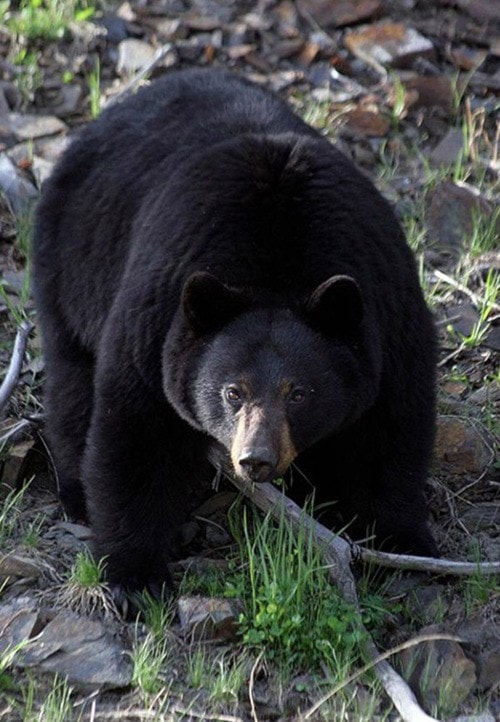After witnessing the traumatic shooting of a black bear, Lydia Koot of Hope, knew that something had to be done about the human-bear relationship. Living in proximity to the majestic creatures, poses several challenges and many of them to the disadvantage of the native black bear.
With the support of the community, the District, and a successful meeting with the Hope Mountain Centre Board — the Hope Mountain Black Bear Committee was formed.
“I contacted several bear awareness groups to establish guidelines for the program and to see what it was all about,” said Koot of her initial contact with bear authorities and the conservation officer in Chilliwack (currently there is no CO for Hope.)
The CO was imperative in the process of determining the current goals the program prescribes to, including a mandate to help resolve human-bear conflict through education, cooperation and community involvement.
“If you do have a sighting — you can phone the CO and they will inform the call centre in Victoria of the incident, where it will be given a case number and put in a file, that is the extent of it,” said Koot.
A lack of resources in terms of bear control, or CO intervention has left something to be desired in bear conservation officiating and Koot is adamant that incident prevention is in the hands of the people.
Often a bear sighting will end up at the end of the barrel of a shotgun. Once a bear has been determined to be a public safety threat, it will be destroyed. More times than naught a crowd will gather to look at the cute cinnamon, blonde or black coloured star attraction and that’s the end.
“A garbage bear is a dead bear,” said Koot, of the result of improper protocol when it comes to a common problem source — the yard, which boasts a smorgasbord of tempting fruit, garbage and other attractants that a bear will naturally flock to.
The Committee has also started a gleaning program made up of volunteers, which offers free of charge to pick all kinds of fruit from people’s property and donate it to various organizations and charities around Hope. The Hope Secondary food program has benefitted from the gleaning process on occasion, as well as people struggling to make ends meet, who can’t afford to buy fruit.
Striving to educate the public about keeping attractants to a minimum by stripping trees of fruit, proper and bear safe garbage maintenance (which involves securing garbage properly, putting it on the curb and kicking bears off of your property) the Committee is making headway in bear conservation.
Koot cautions homeowners to respect the bear by dissuading it from becoming too comfortable on the property.
“It may look cute, but if you photograph it and allow it to take a nap, it will keep getting closer and closer, until one day you leave the door open on a hot day and find a bear in your kitchen,” said Koot. “If you scare the bear it will have a chance.”
Attempts to relocate bears who are not repeat offenders, often fail due to the inability of the bear to successfully navigate in its new environment, which is often the Coquihalla.
Bears are often killed by competitors and starve for lack of topographic familiarity, or simply wander back to the original source of the incident.
“Bears have amazing memories,” said Koot. “They are highly adept at finding their way back to the place of origin.”
Incidents involving sows and cubs frequently end in the destruction of the mama bear and her babies being put into rehab according to Koot.
“Sometimes a bear family or unit will be relocated with the cubs, but they are still faced with similar issues.”
Because of the climate bears have been coming out of hibernation early, so starting in the middle of May this year, the group has been canvasing door-to-door and telling residents to put garbage on the streets the morning of pick up and to get the bird feeders off the ground.
“Everything should be secure and out of reach including petroleum and paints, which the bears love, basically anything that’s not in a fridge should be secure,” said Koot.
The gentle giants are often misunderstood. They are curious, intelligent, loving mother’s and are highly respectful of their human counterparts as long as their space is taken into consideration.
“If you are on a hike, always yell out hey bear, if it hears your voice it will stay away and be alerted to the presence of humans in the area.”
The Black Bear Committee has created two brochures: Living with Bears and Staying Safe in Wildlife Country, which are distributed on Thursday’s at the Skagit by the group and Friends of the Skagit to inform, protect and help prevent further human-bear incidents.
For more information please visit www.hopemountain.org and click the link to HMBBC or contact Lydia Koot at 604-860-4558, lkoot@hopemountain.org.
